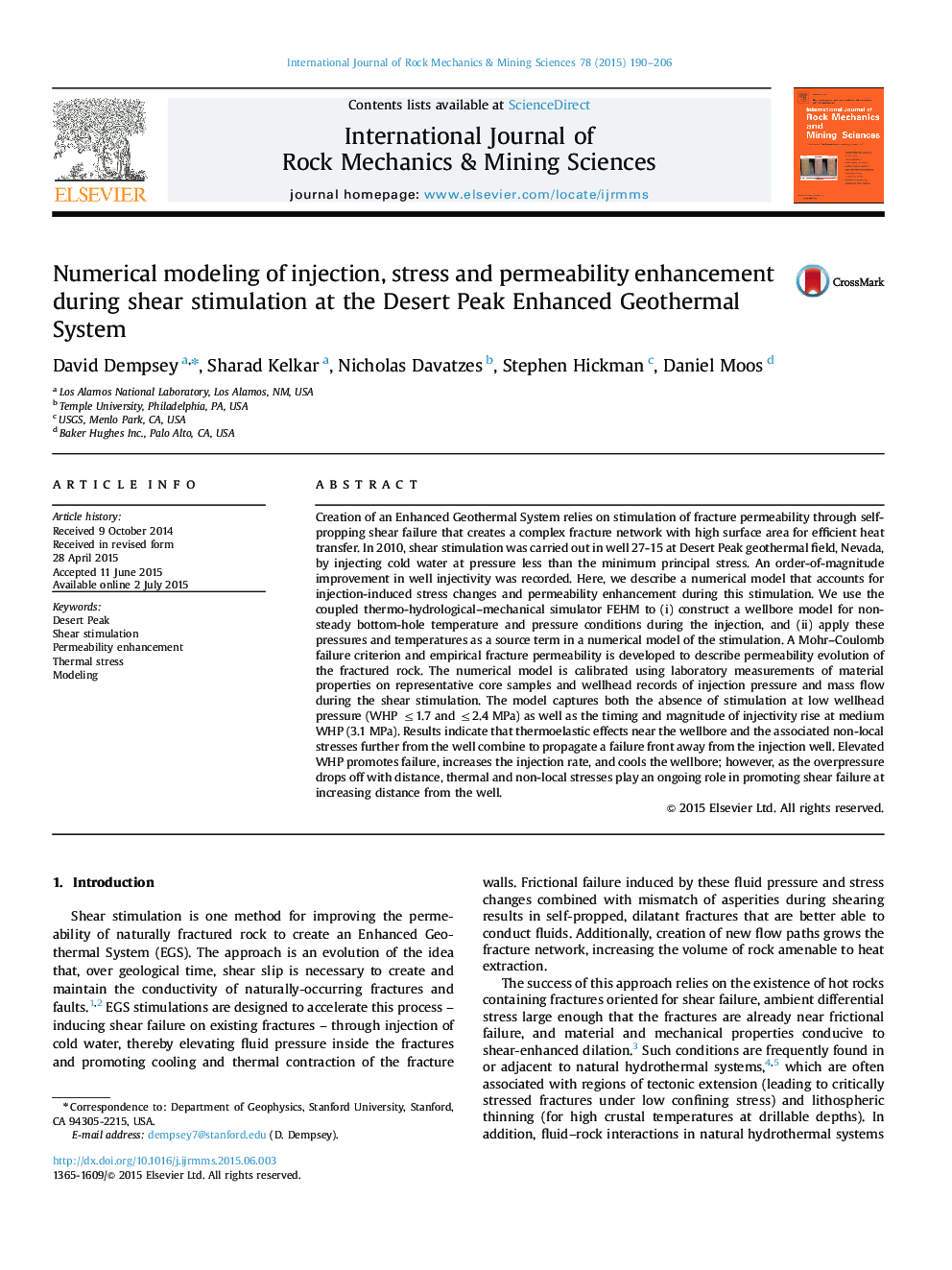| Article ID | Journal | Published Year | Pages | File Type |
|---|---|---|---|---|
| 809398 | International Journal of Rock Mechanics and Mining Sciences | 2015 | 17 Pages |
•Shear stimulation by cold water injection improved injectivity of well DP 27-15.•A model of permeability enhancement due to shear failure is developed for DP 27-15.•Thermal stress contributes more to failure as damage propagates away from borehole.•Stimulated volume correlates well to cold injectate volume, poorly with injectivity.
Creation of an Enhanced Geothermal System relies on stimulation of fracture permeability through self-propping shear failure that creates a complex fracture network with high surface area for efficient heat transfer. In 2010, shear stimulation was carried out in well 27-15 at Desert Peak geothermal field, Nevada, by injecting cold water at pressure less than the minimum principal stress. An order-of-magnitude improvement in well injectivity was recorded. Here, we describe a numerical model that accounts for injection-induced stress changes and permeability enhancement during this stimulation. We use the coupled thermo-hydrological–mechanical simulator FEHM to (i) construct a wellbore model for non-steady bottom-hole temperature and pressure conditions during the injection, and (ii) apply these pressures and temperatures as a source term in a numerical model of the stimulation. A Mohr–Coulomb failure criterion and empirical fracture permeability is developed to describe permeability evolution of the fractured rock. The numerical model is calibrated using laboratory measurements of material properties on representative core samples and wellhead records of injection pressure and mass flow during the shear stimulation. The model captures both the absence of stimulation at low wellhead pressure (WHP ≤1.7 and ≤2.4 MPa) as well as the timing and magnitude of injectivity rise at medium WHP (3.1 MPa). Results indicate that thermoelastic effects near the wellbore and the associated non-local stresses further from the well combine to propagate a failure front away from the injection well. Elevated WHP promotes failure, increases the injection rate, and cools the wellbore; however, as the overpressure drops off with distance, thermal and non-local stresses play an ongoing role in promoting shear failure at increasing distance from the well.
